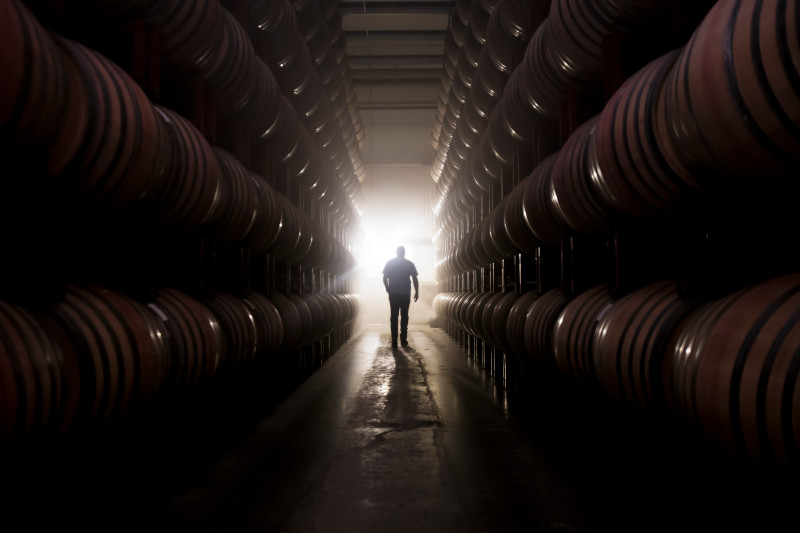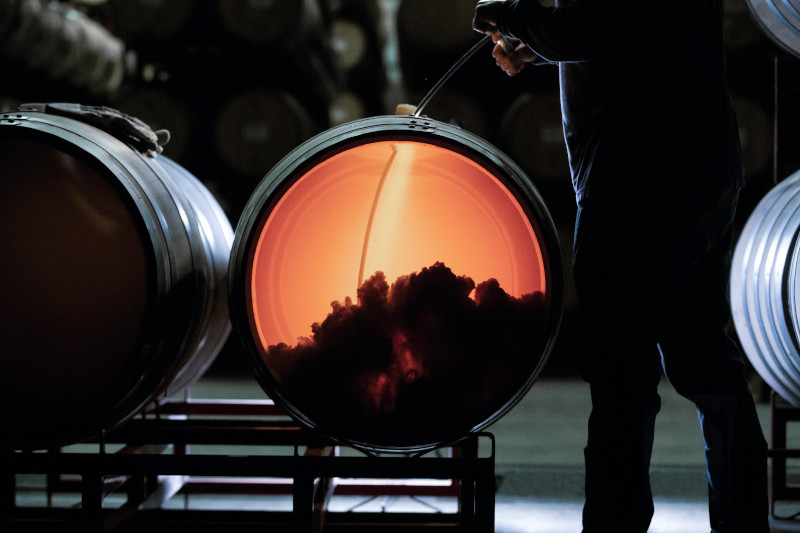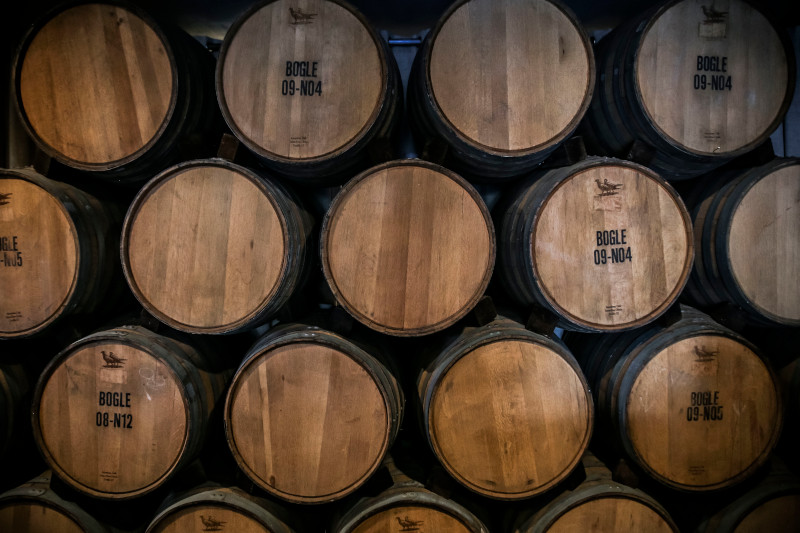The Bogle Barrel Program

As third generation winemakers, we’re proud of where we’ve come from – and even more excited about where we are going. Inspired by the first generation of Bogle winemakers who first planted grapes in 1968, we take the knowledge and values that have been passed down through generations, and then continually improve upon what we do, never taking shortcuts and always going the extra mile. Our winemakers use artisanal techniques that are replicated in very few wineries of our size. From hand stirring our Chardonnay to aging our red wines in small oak barrels, our barrel program helps each wine reach its full potential.
We balance the use of modern equipment and technology with time-tested traditional methods of winemaking. Each and every Bogle wine created is a unique and exciting blend with true varietal character and an approachable style. Our barrel program is unlike any other, and it’s one of the things that gives Bogle wine its signature style and unmatched quality.
While many wineries use various “wood treatments” to mimic the barrel aging process, we use real French and American oak barrels to age every one of our red wines and 50% of our chardonnay. Our barrel room holds over 95,000 small, traditional oak barrels made by a cooperage we’ve had a relationship with for nearly 30 years. Why is this important? What does an oak barrel have to do with wine? Did you know some barrel ingredients can add gluten to a wine?! Keep reading to find out more about the barrel program and why it adds so much value to the Bogle wines you love!
The barrel


Barrels have been a preferred storage and aging vessel for wine for over two millennia. The natural porosity of the oak barrel allows just enough evaporation and oxygenation to concentrate the wine’s flavor and soften its tannins, but not enough to cause oxidation or spoilage.
We source our barrels from Missouri where the American oak trees native to the Ozark Plateau grow slowly due to the fast-draining soils there. The slow growth of these trees leads to extra fine grain wood to deliver a better flavor and mouthfeel. The barrels are toasted over a fire to help release the lignin, tannin, and cellulose from the wood. Our head winemaker and the VP of winemaking, Eric Aafedt, has worked with the local vendor there for nearly 30 years and has developed our signature “toastiness” for the Bogle wines.
If barrel storage and aging has been around for so long and seems to be a natural perfect pairing for the wine aging process, why wouldn’t every winery use them? Barrels take up more space, require more time (we hand stir every barrel of chardonnay at least once per month!), and lead to the loss of up to 10% of the wine through evaporation. Because of this, a lot of wine producers find other methods easier and more cost effective. But those other processes are wasteful in resources and can never match the quality of real, traditional barrel aged wine.
We value integrity over profit, which allows us to make decisions that result in making the best quality and best tasting wine we can, each and every year. The path is not easy, but our family is committed to ensuring that you enjoy each glass you pour. With our deep commitment to quality, we would not have it any other way.
Barrel aging

While the primary flavors and aromas are attributed to the grape varietal, the secondary and tertiary aromas and flavors in wine are derived from the fermentation and aging processes. The flavors and aromas in wine that are most often attributed to oak include oak, toast, vanilla, tea, caramel, cream, smoke, spice, clove, mocha, and toffee. The oak barrel also effects the level of tannin and the overall mouthfeel of the wine.
You’ve maybe also heard of a wine being aged in “new” or “virgin” oak. This is because wine barrels can be used multiple times. Oak barrels will impart more of the classic oak flavors to the first wines aged in it. Each time the barrel is used, the properties attributed to the oak barrel decrease until we describe a wine as being aged in a “neutral” oak, which means the oak barrel is no longer imbuing any of the oak flavors or aromas into the wine. For our barrel program, our new barrels are first used for Chardonnay; then Cabernet, Old Vine Zin and our Petite Sirah; and finally for Merlot, Pinot Noir, and Essential Red Blend.
Over time, the barrel will also change in porosity, limiting the oxygen transport during maturation. All these factors dictate the aromas and flavors in the wine, and all are carefully watched and managed by our winemaking team to ensure we produce an array of varietally correct wines that are beautifully balanced and flavorful.
We generally use our barrels anywhere from 5 to 10 years, at its various stages. We then repurpose them for non-winemaking activities such as planters on site, use for in-store displays, or we donate them.
Barrels and gluten

Wine is naturally gluten free, but there are some ingredients in the barrel making process, mainly the different glues that are used, that can impart small traces of gluten into your wine. We have worked with our cooperage to change the glues that we use to ones that do not contain gluten.
When tested, our wines classify as “gluten free” using tolerances established by FDA guidelines. After filtering and fining, no traces appear when our wines are analyzed for gluten. However, we recommend consulting you doctor regarding your sensitivity level. For information on which of our wines are gluten free, click here.
Cheers to respecting the traditional craft and providing you the best quality wine that overdelivers every time!


